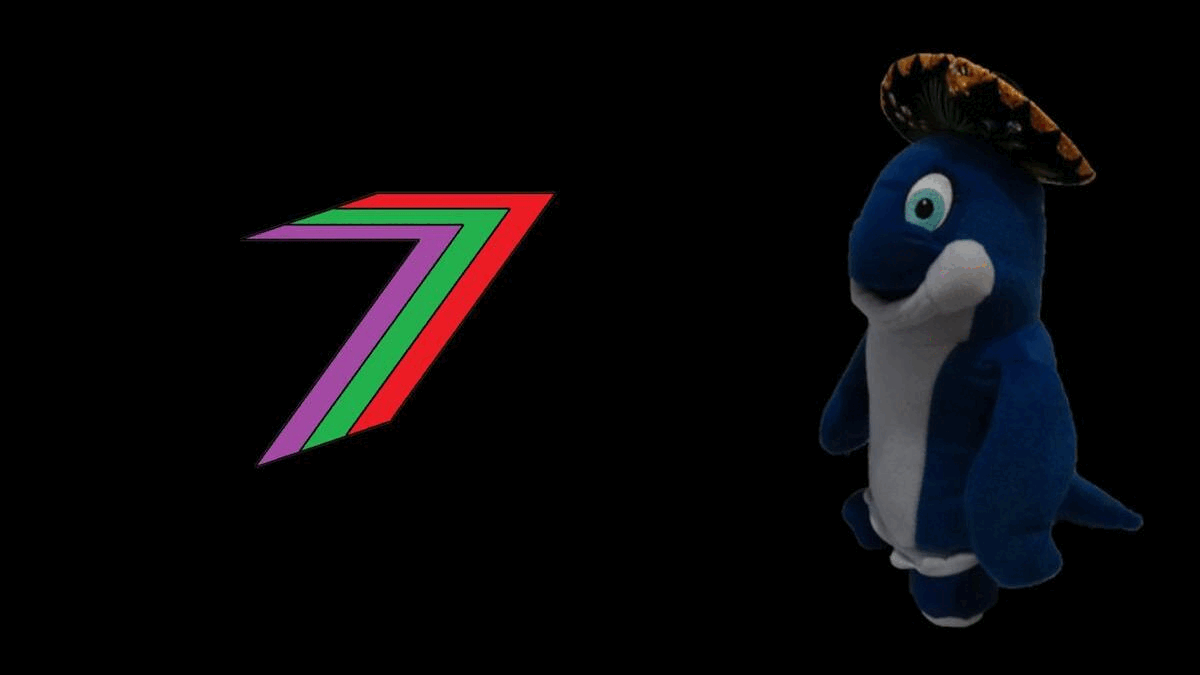Hi Everyone,
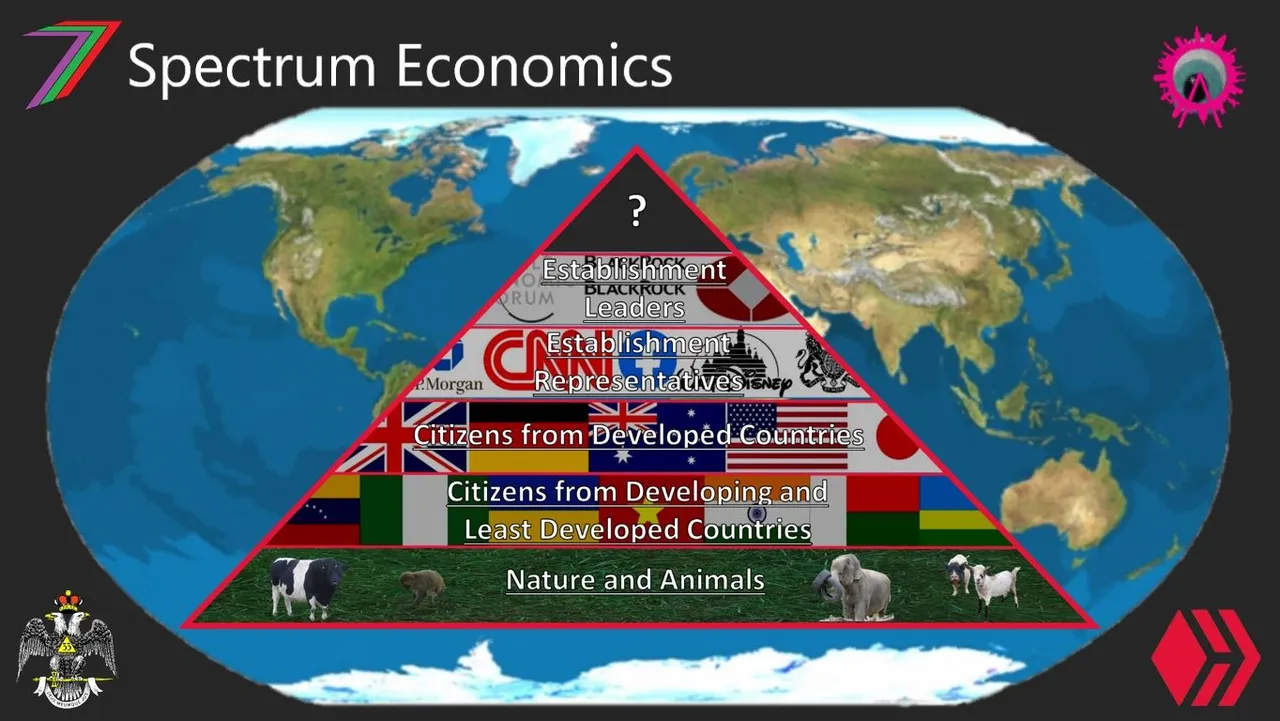
We live in a world dominated by hierarchies. Hierarchies are everywhere. They are in our families, religious institutions, schools, workplaces, and Governments, They are used to divide classes and social groups. Even some concepts and ideas (e.g. Maslow’s Hierarchy of Needs) are explained within a hierarchical framework. We are exposed to hierarchies at a very early age. We are consistently exposed to them throughout our lives. Basic forms of hierarchies (e.g. dominance hierarchies) even exist in nature (e.g. in primates) (Wikipedia). It is understandable that hierarchy is treated as a natural and inevitable part of life. Despite the apparent necessity of hierarchies, the extent of usage and dependence on them should be questioned.
Why are we surrounded by hierarchies?
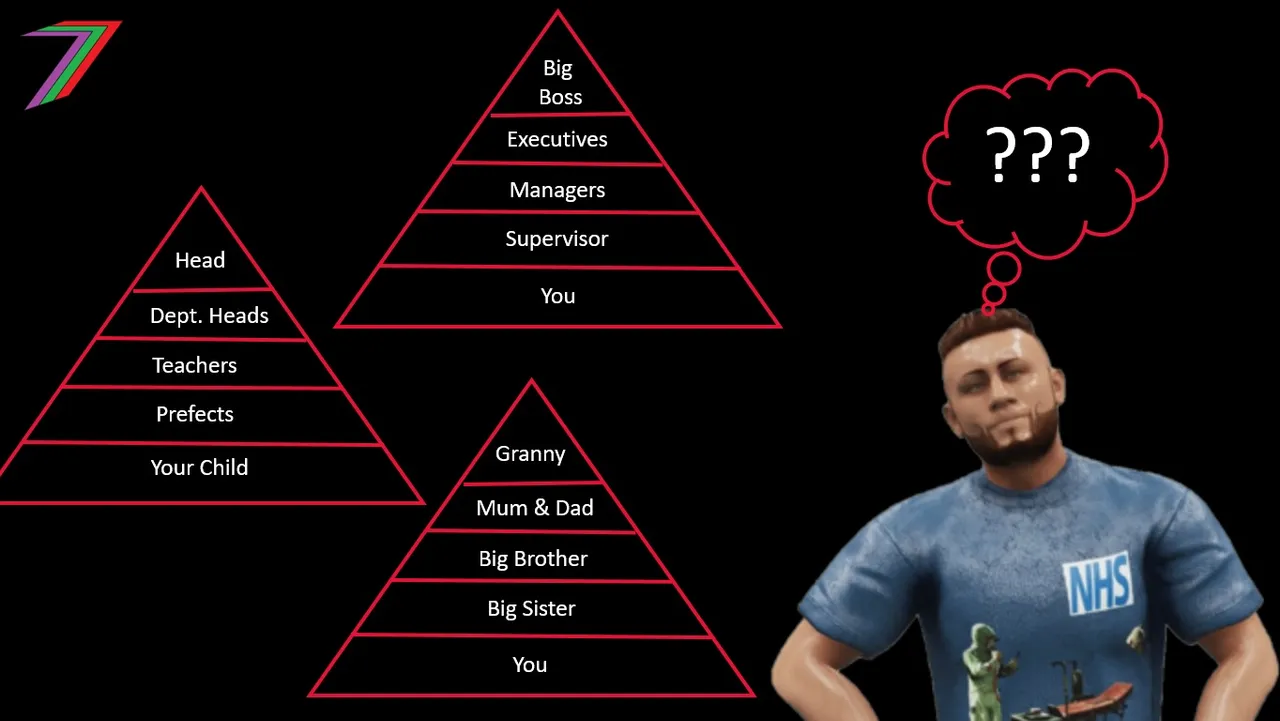
To understand why something is the way it is, we need to consider who benefits from it and who is able to influence its implementation and propagation. Hierarchies have existed for millennia. To understand more about them we need to explore their origin, earliest usage, and rise to prominent usage. A good place to start would be with the origin of the word ‘hierarchy’. According to the Online Etymology Dictionary, the word ‘hierarchy’ can be broken down and its origins can be described as follows.
late 14c., jerarchie, ierarchie, "rank in the sacred order; one of the three divisions of the nine orders of angels;" loosely, "rule, dominion," from Old French ierarchie (14c., Modern French hiérarchie), from Medieval Latin hierarchia "ranked division of angels" (in the system of Dionysius the Areopagite), from Greek hierarkhia "rule of a high priest," from hierarkhes "high priest, leader of sacred rites," from ta hiera "the sacred rites" (neuter plural of hieros "sacred;" see ire) + arkhein "to lead, rule" (see archon). Sense of "ranked organization of persons or things" first recorded 1610s, initially of clergy, sense probably influenced by higher. (Online Etymology Dictionary)
The word ‘hierarchy’ originated with the leadership structures of early Christianity. However, in practice, we could argue that the concept of hierarchy existed long before the origin of the word. Hierarchical structures existed in the ancient world. The ancient Romans and Egyptians had societal hierarchy structures. Figure 1 contains a broad overview of a likely Roman social hierarchy.
Figure 1: Ancient roman social hierarchy
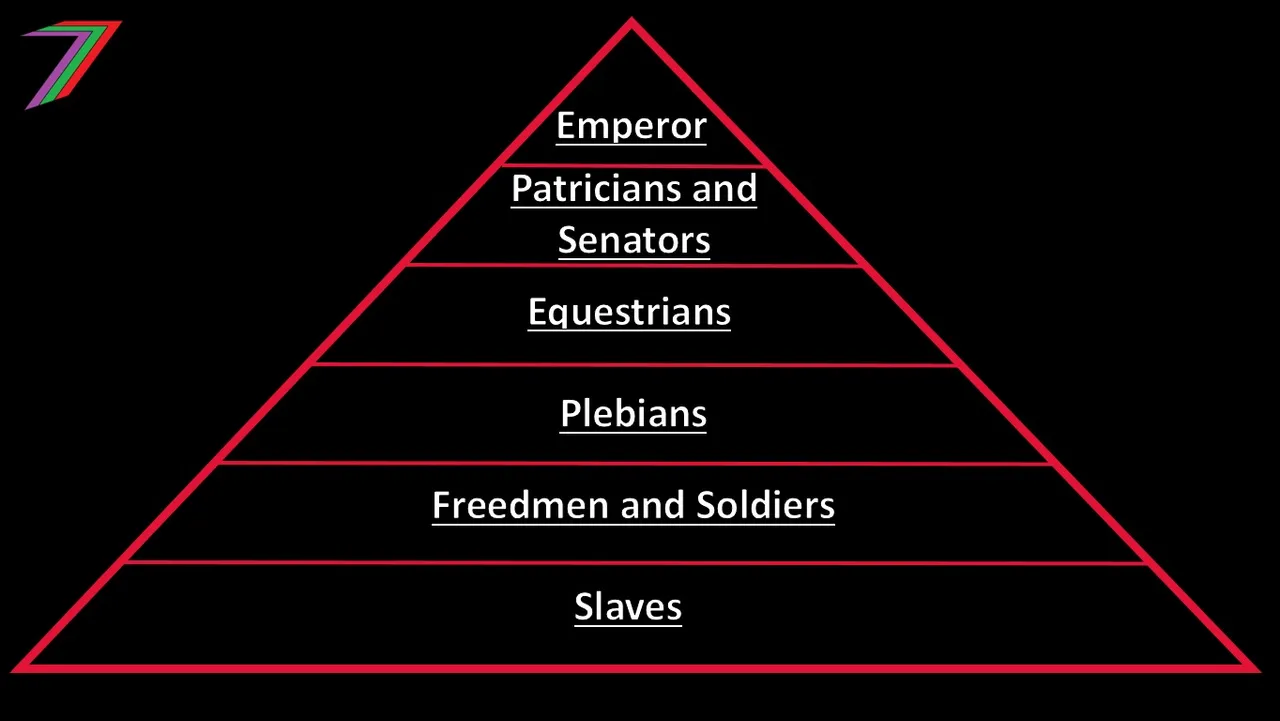
Source: Daan Ebbers
The Egyptians had a similar social hierarchy but with elevated positions for religious leaders (History on the Net). Hierarchies also existed for the militaries of these civilisation. The Emperor (Roman) and Pharaoh (Egyptian) were at the tops of these hierarchies.
Hierarchical structures were intended to be used to rule or control others, maintain order, and to indicate status or priority. Hierarchies are intended to benefit people towards the top of them. The people at the top can focus on the broader objectives of the organisation. They only need to communicate with a small group of people while also maintaining control of the larger group through delegation of authority and responsibility for assigned roles or objectives. They are insulated from people lower in the organisation who usually only have opportunities to meet people one or two levels above them in the hierarchy.
The people at the top of the hierarchy also have control over the design of the hierarchy. They could make it flat (e.g. two or three levels) or tall (e.g. many levels). As organisations grow bigger, more levels become easier to justify (e.g. maintain efficiency by capping span of control). As the hierarchy grows taller, the influence of those near the bottom diminishes.
Naturally occurring Hierarchies
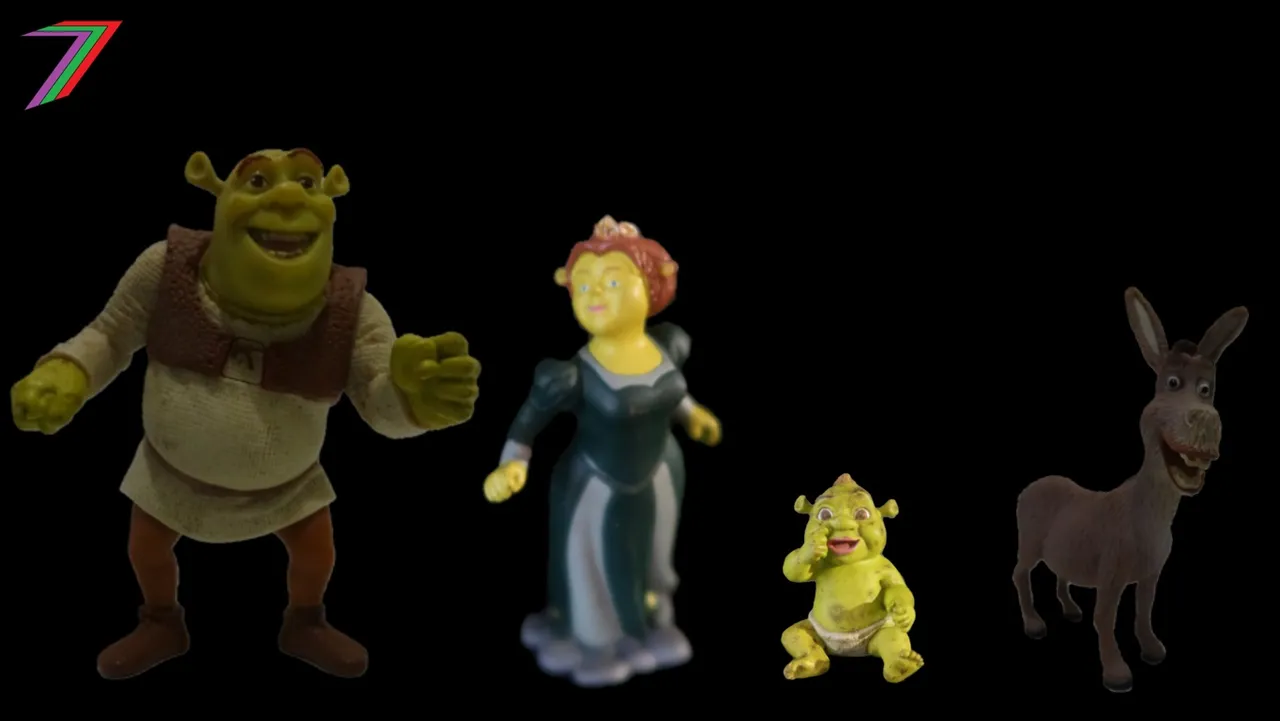
Hierarchy occurs naturally in families out of necessity. Parents need to have some control over their children when they are too young to make decisions or look after themselves. We could argue the same occurs in nature where the stronger and more senior members of the pack play a role in protecting the weaker more vulnerable members. Naturally occurring hierarchies have only a few levels. This is because naturally occurring groups (people and animals) are small (e.g. adults at the top and youngest children at the bottom). Even wolves do not form multi-layer hierarchies (e.g. Alpha, Beta, and Omega wolves) in the wild where they tend to live in smaller groups and their packs are spread out. In captivity, wolves are observed to form hierarchies because they are kept in much larger groups and in close proximity to each other (Science Norway).
Does size matter?
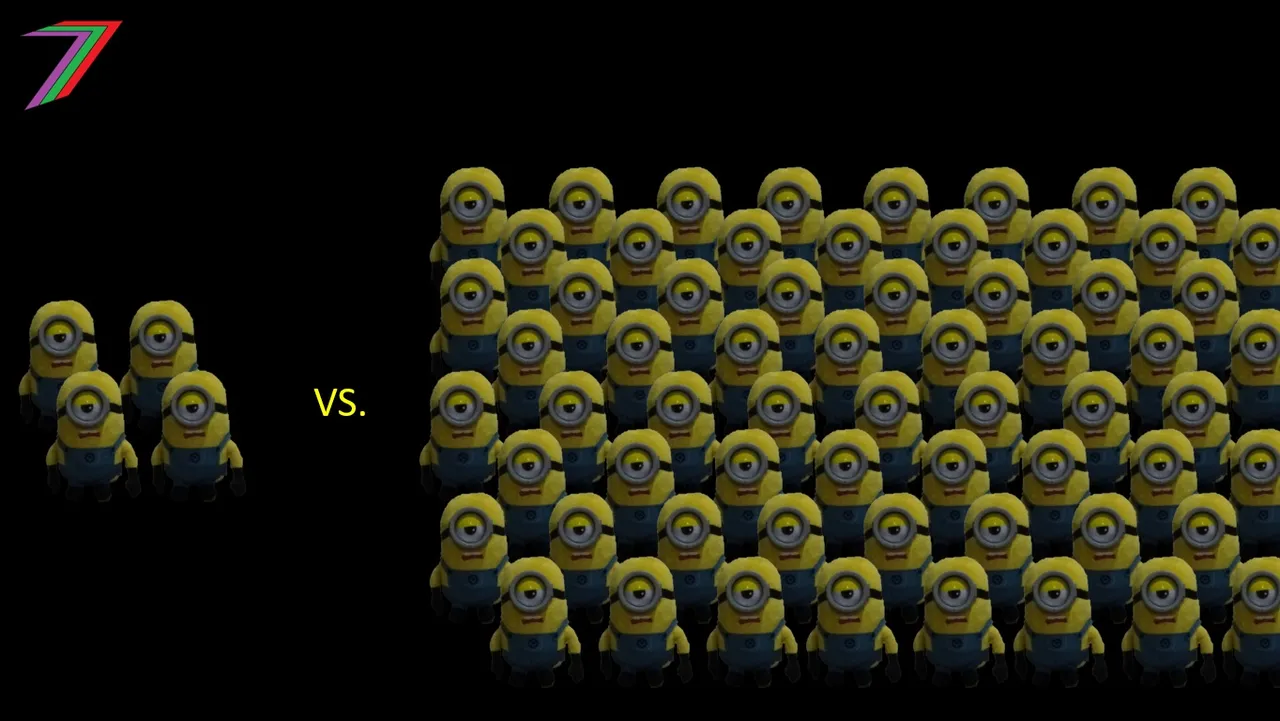
As human populations have grown and people have formed or migrated to larger settlements, larger hierarchies could be argued to be a greater necessity. Religions became some of the earliest large global organisations. Monotheistic religions also claimed to have one source of truth (e.g. God and scriptures). Therefore, the hierarchy branches from this source and filters to other countries and communities. The Catholic Church (secular clergy) has six levels (i.e. Top to bottom: Pope, Cardinals, Archbishops, Bishops, Priests, and Deacons) in their hierarchy. (Vatican City Tours).
The Catholic Church's hierarchy has remained fundamentally unchanged for centuries despite the growth in the number of its members during this time. The increase in size did not lead to a proportionally taller hierarchical structure. This could be due to the desire to retain the traditional structure, the nature of reporting, or size was considered irrelevant. The Catholic Church hierarchy is an example that size does not need to influence the number of levels in a hierarchy.
Government agencies can have very tall hierarchies. For example, the Australian Queensland Department of Transport and Main Roads (my former workplace) has over a dozen levels in their hierarchy. They have seven administration levels (AO2 to AO8), Director, Executive Director, General Manager, Deputy Director-General, Director-General, and Department Minister (Transport and Main Roads). Militaries have even taller hierarchies. For example, the US Army has up to 25 levels in its hierarchy (Hierarchy Structure). Many large businesses tend to have large and tall hierarchies. For example, Walmart has approximately 10 levels in their hierarchy (Hierarchy Structure).
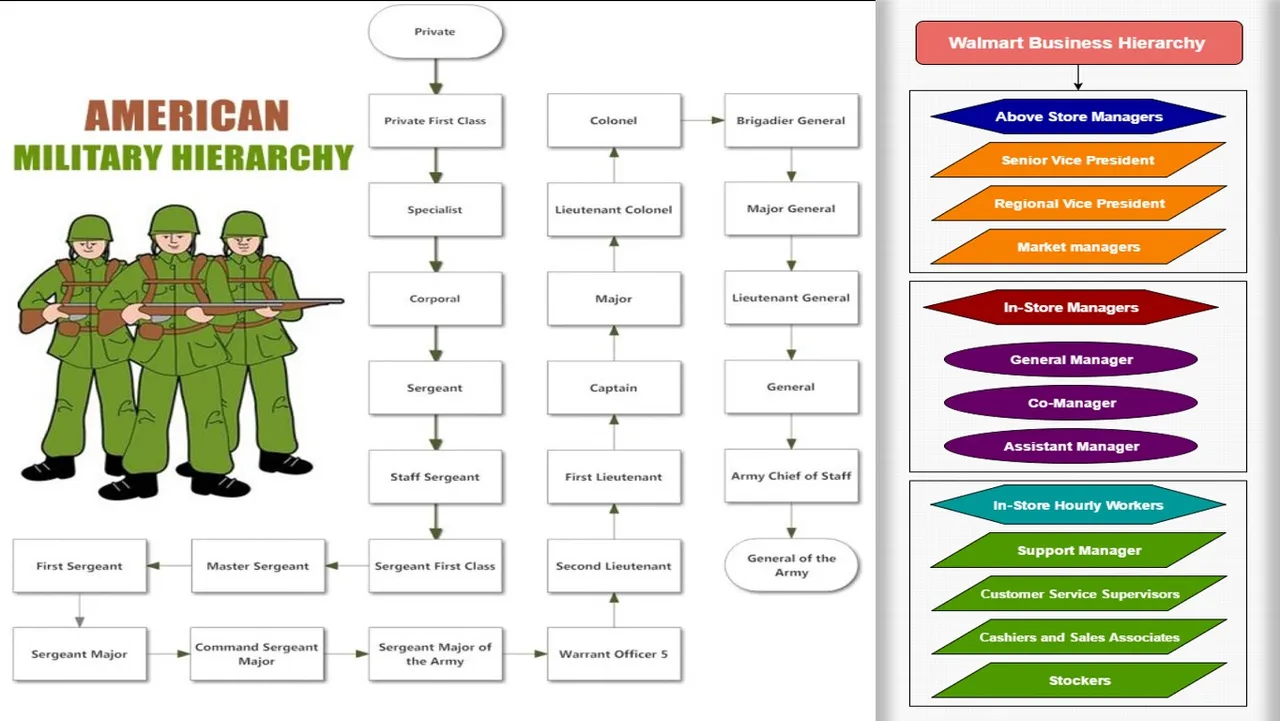
The size of large businesses as well as Governments have been consistently increasing for developed countries. This has led to an increase in the proportion of the workforce working in these larger organisations; thus, more people are subject to working in organisations with large and tall hierarchies. In my post, The Masters of Production, I discuss the extent of the increase in size of both Government and the largest private sector companies.
When a hierarchy is large and tall (even at just the higher levels), there are proportionally fewer people near the top of the organisations making strategic decisions. Most other people are relegated to serving only aspects of the broader objectives. This leads to the compartmentalisation of work, which reduces communication across the organisation. This may mask the true objectives of the organisation as individual parts can play many different roles when combined on a larger scale.
Hierarchies of Social Class
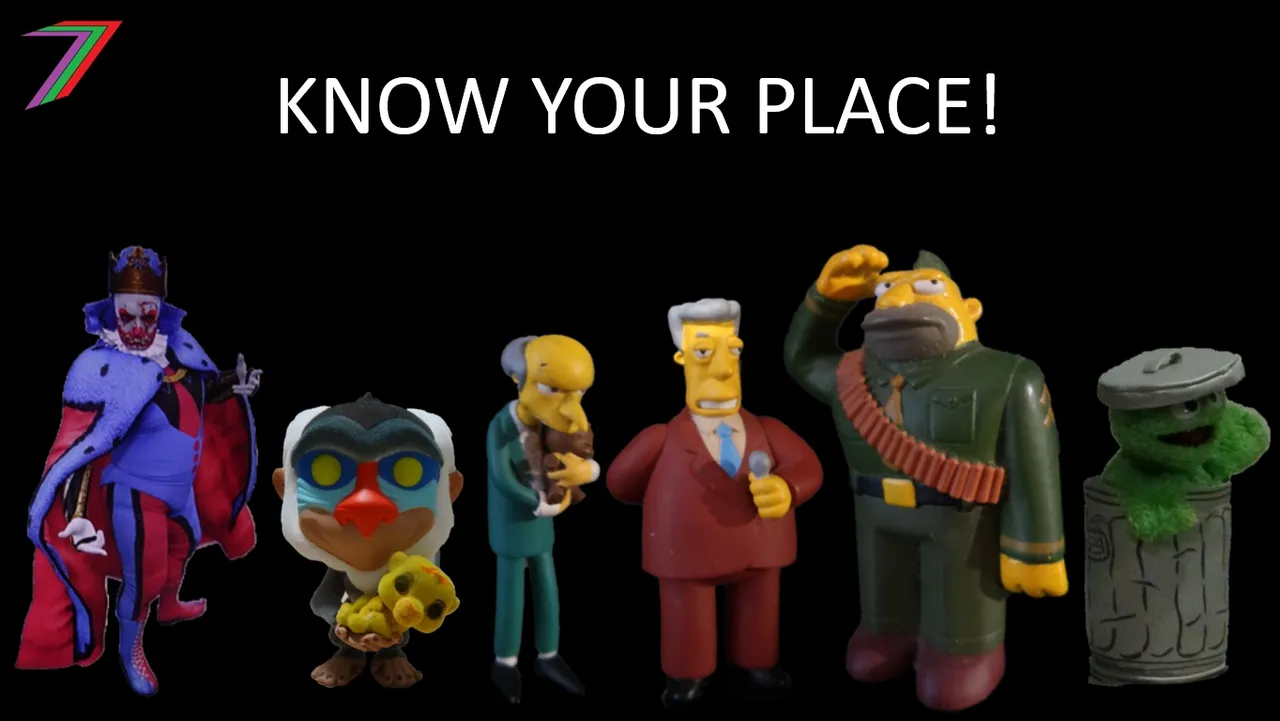
In modern societies, hierarchies in social class appear less obvious. Very few developed countries have hierarchical structures that openly resemble those of the Ancient Roman and Egyptian empires. We do not see the direct chain of command between people at the top filtering through to the people at the bottom. Revolutions in Europe greatly contributed to the breakdown of these hierarchies. To appease people formerly near or at the bottom of the hierarchies, society needed to become more egalitarian (equal rights from birth).
Communism was presented as a more egalitarian solution. However, it was applied to countries using authoritarian Marxist principles. The leaders of Government formed the top levels of the new hierarchy and ordinary people were forced to obey them (People for Democratic Revolution). Modern western representative democracy was more successful at creating the impression of equality. Various forms of it has spread across Europe, North America, and many other parts of the world. See Figure 2 for ranking of democracies based on level of egalitarianism defined by Our World in Data.
Figure 2: Ranking countries based on the perception of Egalitarianism Democracy
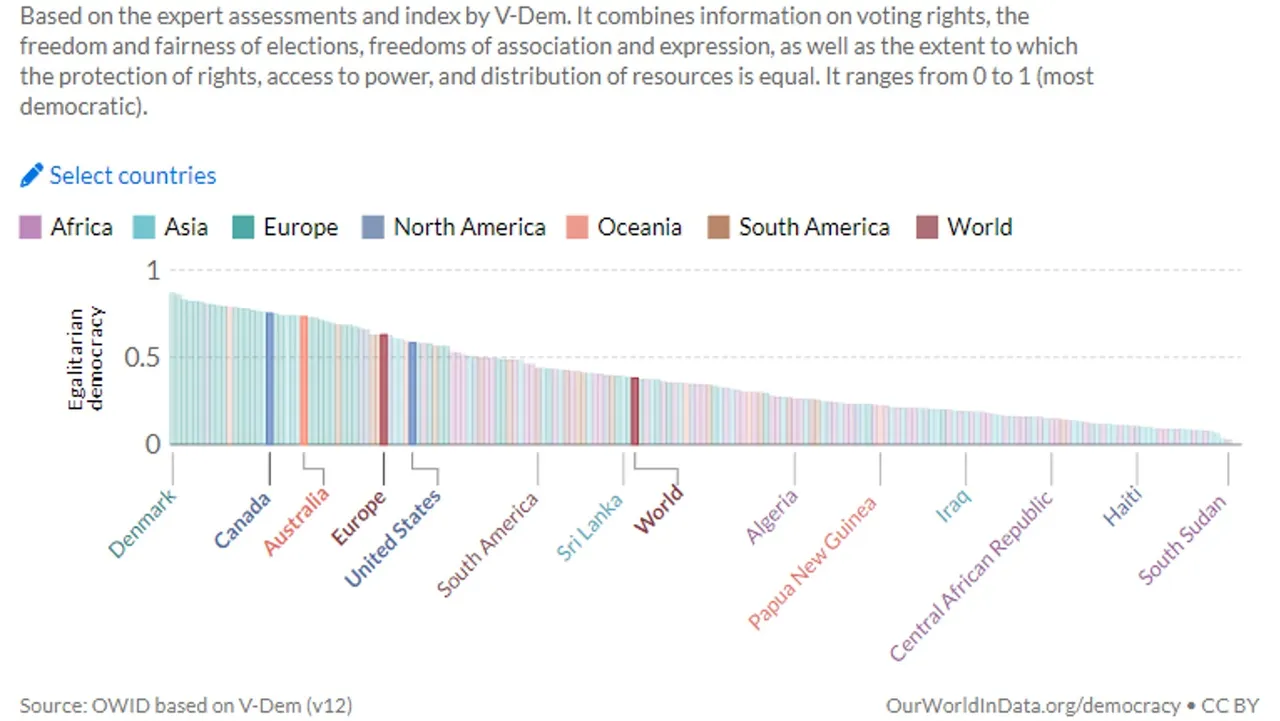
Source: Our World in Data
Western countries dominate the higher end of the above scale. They more closely meet the criteria of egalitarianism than countries that do not follow the western model. Despite, the apparent removal of hierarchies to social class, hierarchies are even more prevalent in every other aspect of life. The only difference is that becoming part of a particular hierarchy is through choice. For example, people can choose their jobs. They can choose which work hierarchy they want to join. This is not really a choice as the options are between which hierarchies to be part of and not whether we want to be a part of any hierarchy. Government and Big Business have done a good job at limiting opportunities in self-employment and in small businesses (see post The Masters of Production). The teaching and enforcement of hierarchies in school is intended to normalise them by the time we reach adulthood.
Global Hierarchy
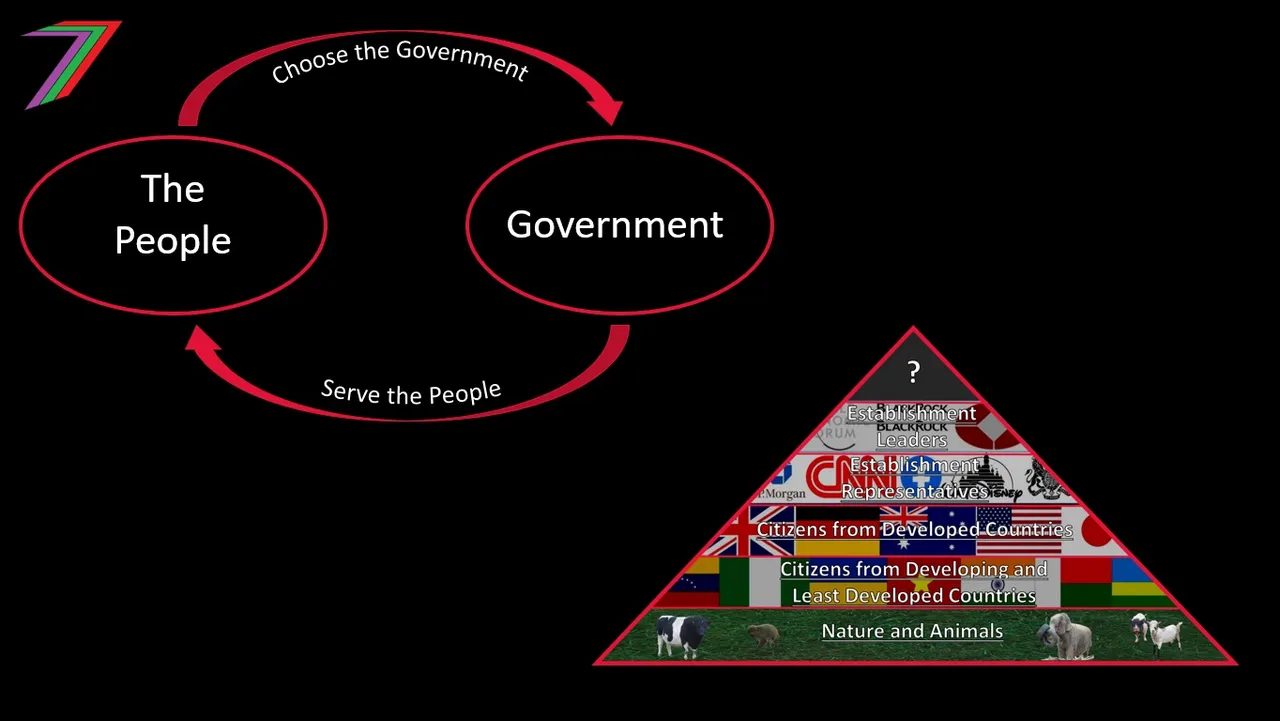
Hierarchies in social class are less obvious because they have been masked by the illusion of choice and scale. We could naively replace a social hierarchy with a simple circular flow chart representing the intended illusion. See Figure 3.
Figure 3: Social Hierarchy replaced with Social Circular Flow
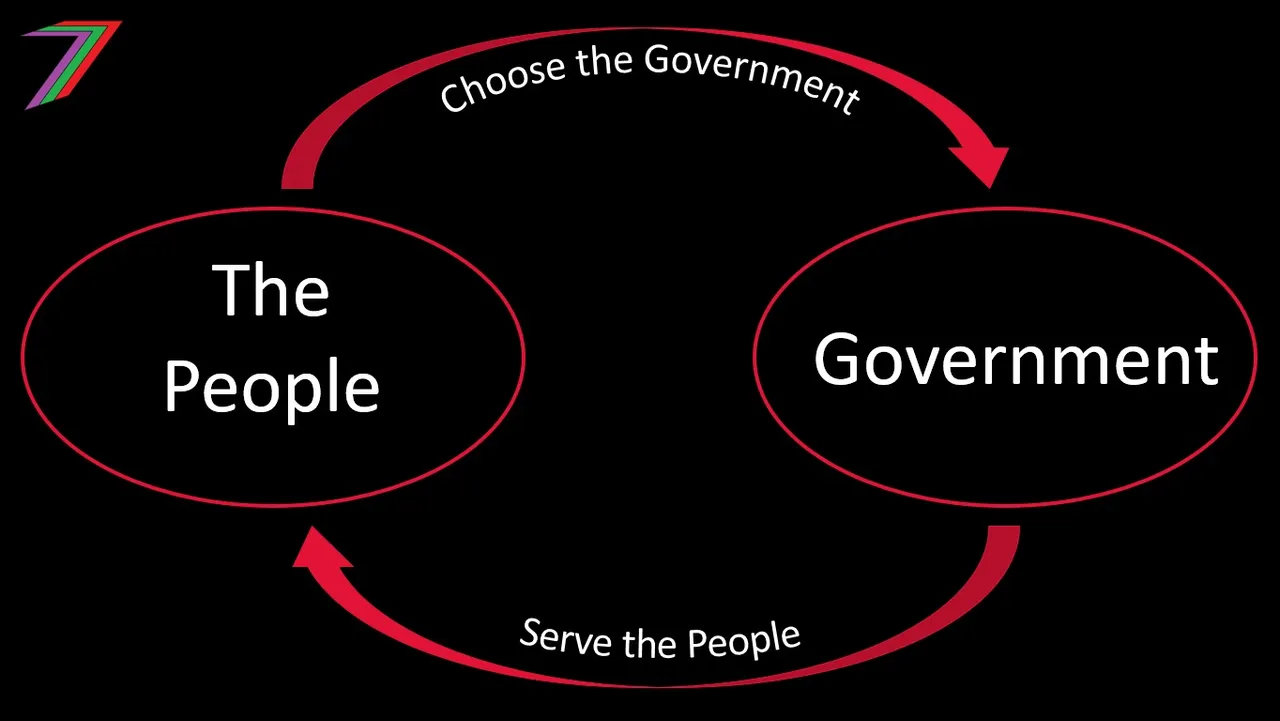
As part of this illusion. The people select the Government. The Government serve the people. The people assess the performance of the Government. They replace them if they do not meet expectations. Governments are not above the people because the people select them and can hold them accountable. The democratic process provides opportunity to anyone who wishes to serve their country.
We could take a more realistic approach by looking past the illusion. We could consider a more accurate but still incomplete social hierarchy. The politicians who hold positions in Government are at the top of the hierarchy. The few privileged families that these top politicians can be selected from are next. The business leaders of the largest companies could be placed on the same level. The ordinary people are at the bottom. On a very simplistic level, the western countries social hierarchy could be described as in Figure 4.
Figure 4: Simple Social Hierarchy
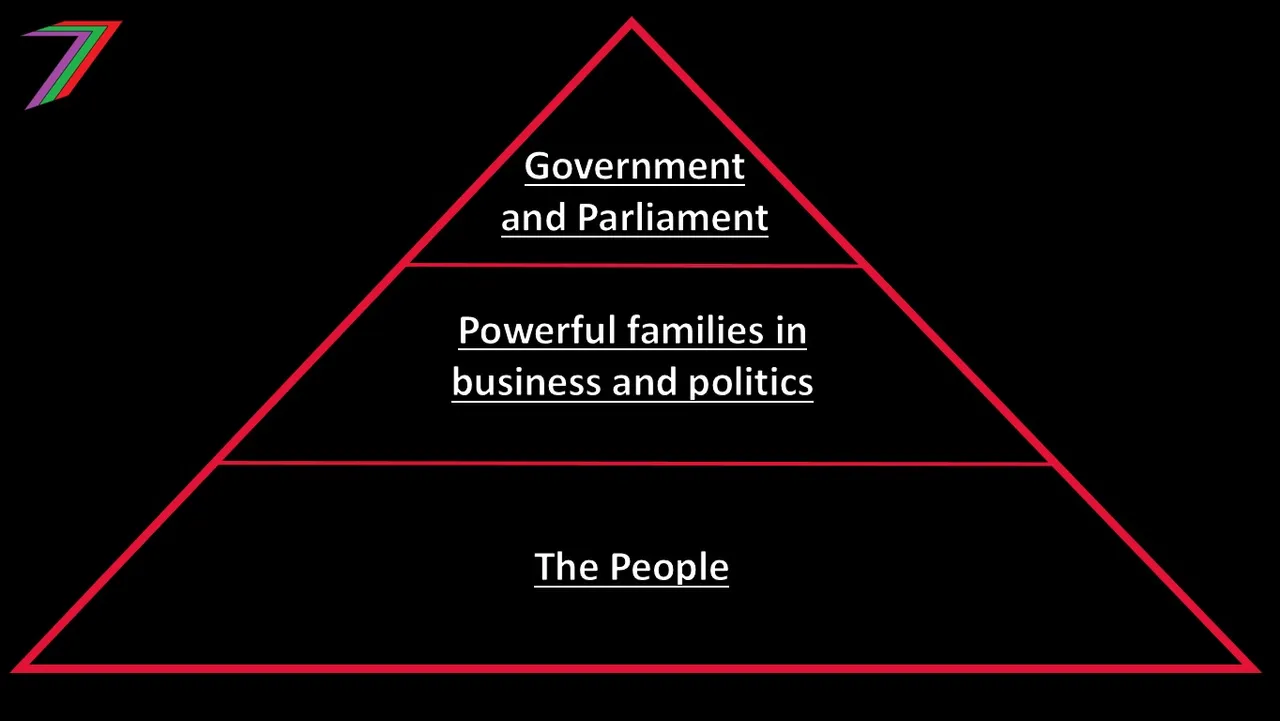
This hierarchy is incomplete as it does not include the mechanisms used by ‘The Establishment’ (Government, Media, Big Business, Banks, and Religion). In my post, The Establishment, I explain in detail how I believe the Establishment operates. We could, more accurately, substitute the top two layers of the hierarchy. Government could be replaced by Establishment leaders as the new top level and powerful families could be replaced by Establishment representatives as the new second level. See Figure 5.
Figure 5: Societal Hierarchy (Establishment Led)
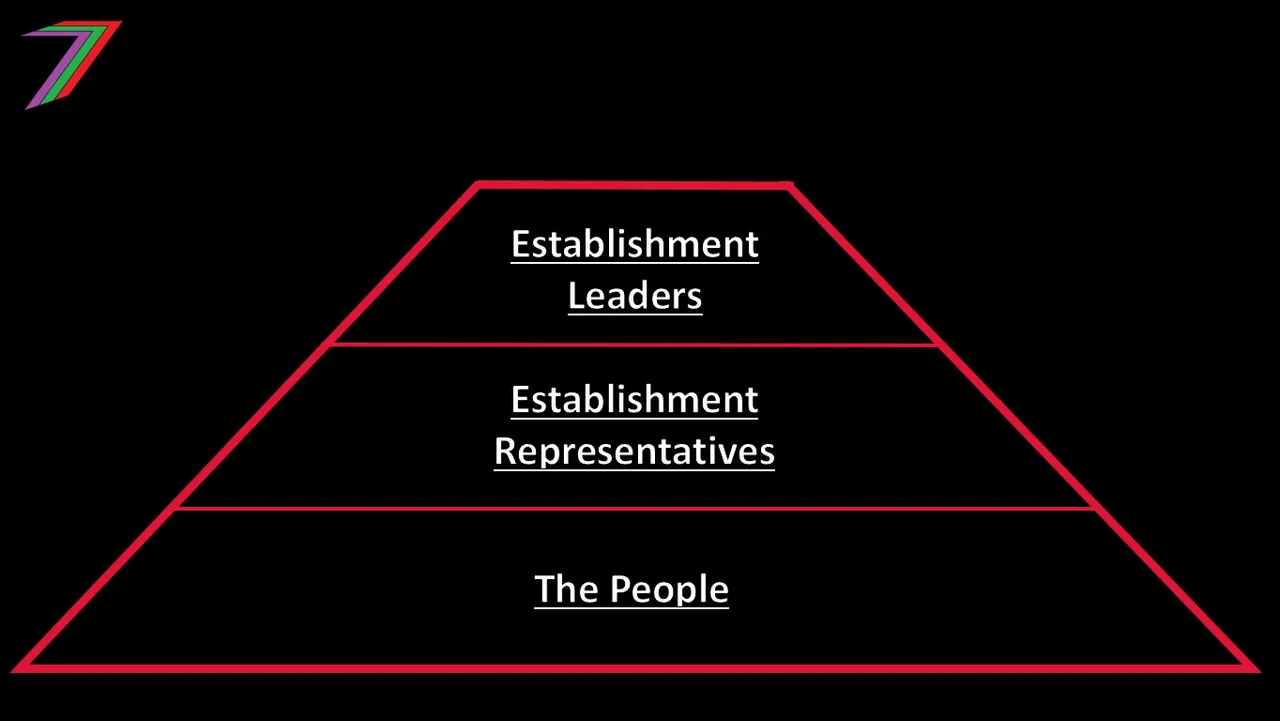
This pyramid has a flat top. This is because there are many people that could be considered Establishment leaders. Many of these leaders’ roles extend beyond national boundaries. They could be from any of the main areas of the Establishment. Therefore, on a national level, societal hierarchies do not have a pointed top. However, a global hierarchy, which national hierarchies most likely fit into, could have a pointed top. It is unclear, who or what fills that top. Figure 6 contains the basic structure of a theoretical global hierarchy.
Figure 6: Theoretical Global Hierarchy
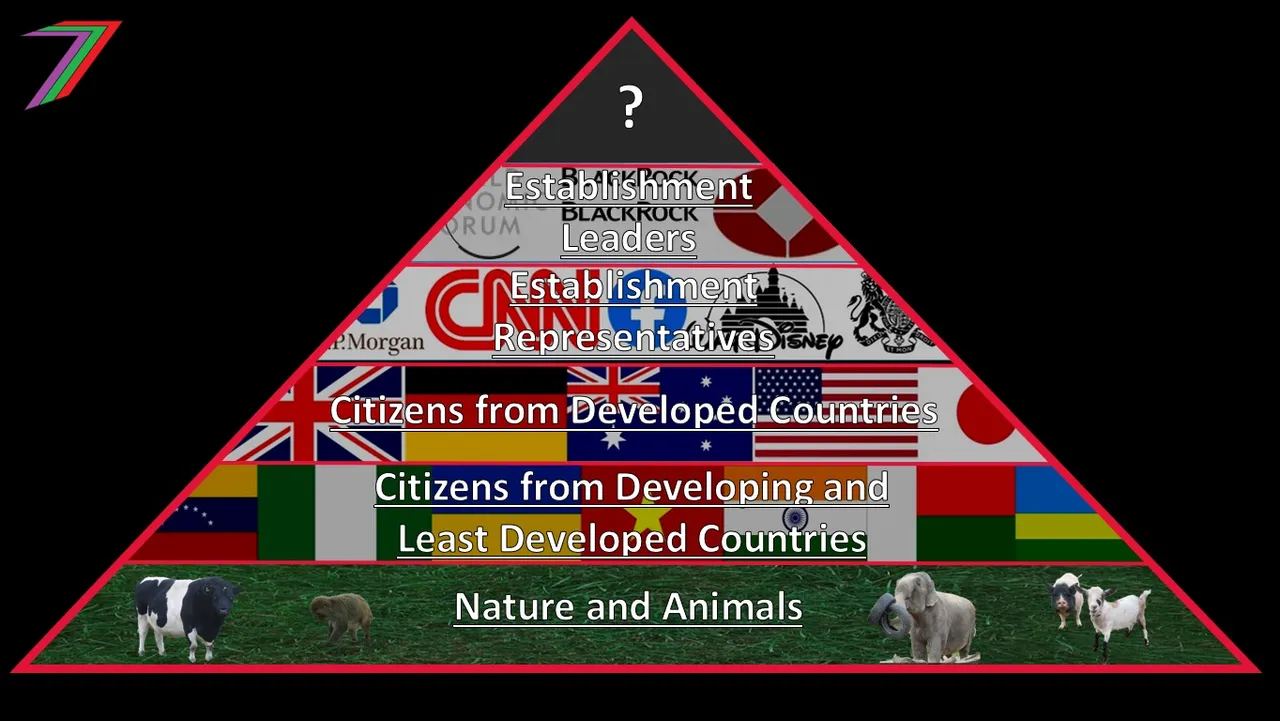
This hierarchy contains 6 levels (similar to the Catholic Church and Roman Empire hierarchies). Unlike those hierarchies, each level does not have a clearly defined group of people. Instead, they contain multiple groups, which have been assumed to have similar influence and standing within a global hierarchy. The hierarchy could be divided further but would be less accurate. The purpose of this hierarchy is not to display a clear distinction between groups at various levels. Instead, it is to demonstrate that a global hierarchy exists and that some groups of people have more authority and higher status than others. In the following subsections of this post, I describe the groups within each level in more detail.
Nature and Animals
As this is a global hierarchy, I believe nature and animals should be included. We are part of this world and not the world itself. I consider nature and animals to be at the bottom. At our convenience, they are still almost universally considered as property. Their existence is considered mostly for our benefit. They are considered to have less rights than any group of human beings.
I discuss our relationship with animals in the following posts.
Citizens from developing and least developed countries
I have divided citizens from developing and least developed countries from citizens of developed countries. I believe the citizens of developing and least developed countries are exploited by their leaders, multinational companies, and developed nations Governments. The resources of their country are taken in exchange for payments to their leaders. Some of their citizens are forced into slave labour. Others are exploited as low cost labour. Children are exploited as cheap or free labour. Citizens of developed countries often benefit (e.g. lower priced goods because of reduced cost of production) at the expense of citizens of developing and least developed countries.
In my post, Exploitation of the Poorest Countries, I discussed the poorest nations in the context of their leadership, economic activity, trade, use of labour, culture and religion, and history. In my posts, Scarcity (Part 4) - Labour, Capital, and Entrepreneurship and Less jobs vs less working hours – Further discussion about efficiency and technology, I discussed the exploitation of labour and the maximising of profits for multinational companies.
Citizens from developed countries
Most citizens of developed countries are considerably better off than the citizens of developing and least developed countries. Most people have managed to achieve a reasonable standard of living. Most people have the basics of food and shelter. They have access to essential services such as healthcare, education, transport, energy supply, sanitation, and clean water. They benefit from low cost products produced by exploited labour from developed and least developed countries. However, their growth in quality of life has been stunted by:
- the disproportionate claim from increased productivity by Big Business
- inflation caused by excessive money creation by the banks
- increased taxation by the Governments
They have no influence on decision-making as Government leaders are selected within parties. This process is strongly influenced by influential external parties.
In the following posts, I discuss various aspects of western society and democracy (mostly focused on UK, USA, and Australia)
Establishment Representatives
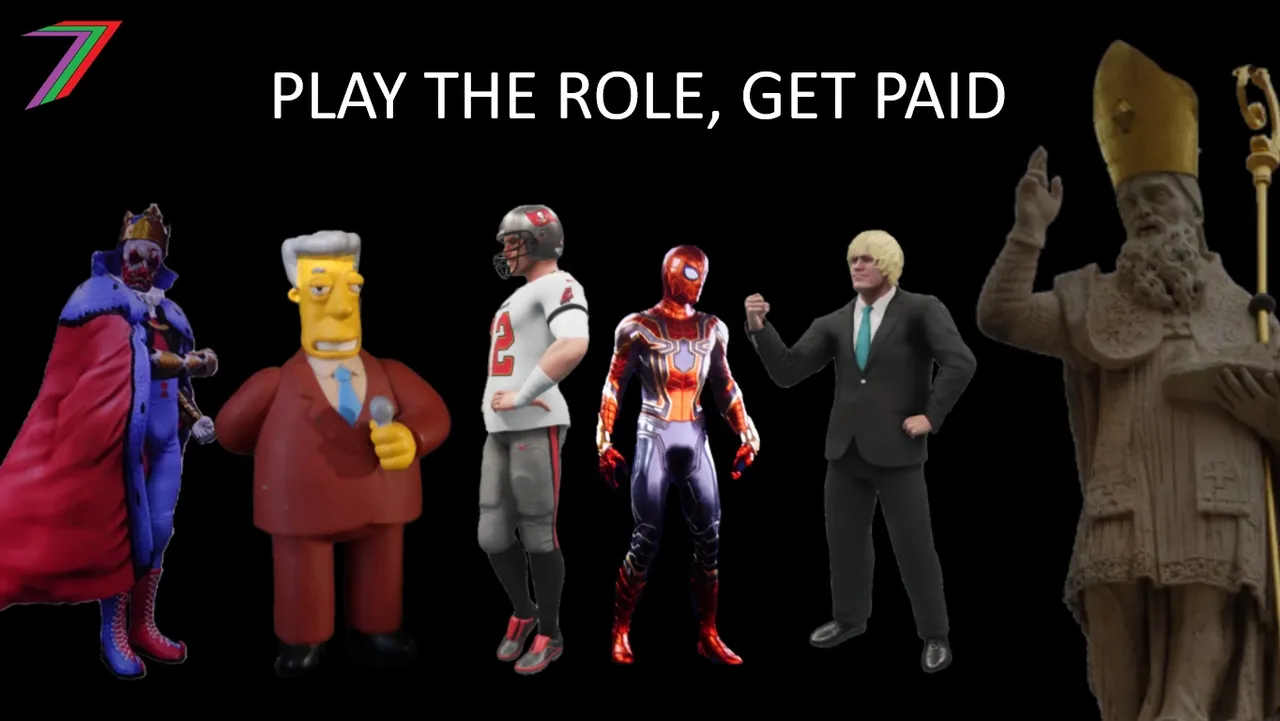
Establishment representatives knowingly or even unknowingly represent the agenda of the Establishment. These people hold prominent positions in areas such as mainstream media, entertainment, religious organisations, large private companies, Government, Civil Service, international organisations, and financial institutions. They normally have high salaries and enjoy privileges unavailable to the regular public. They have control over a particular field but have a limited role in shaping broad national or international policy.
Despite having access to an abundance of resources and funds, most Government leaders are Establishment representatives. They have significant power across many areas but this is confined to delivering particular objectives. If they fail on these objectives or become too ambitious, they are punished through scandals or sometimes even lose their positions. In most western democracies, the most powerful people in Government often do not hold the highest or most prominent positions in their party (e.g. 1922 committee in the UK Tory party).
Monarchs previously could have been considered as Establishment leaders but have lost influence as their line of control is too direct to be tolerated in western society. They play a support role to the Establishment leaders. It is likely that many of the existing Establishment leaders descended from royalty; thus maintaining power within the family. For example, 42 of the US Presidents can trace their ancestry back to John Lackland Plantagenet, King of England (r. 1199-1216) (News Punch).
In the following posts, I discuss various aspects of the Establishment.
A Peripheral look at the Great Reset and Fourth Industrial Revolution
The Two-Party Political System – The dictatorship we didn’t know we had
Establishment Leaders

Establishment leaders direct and control the Establishment’s agenda. They set broad goals and strategies to be implemented at national and international levels. They dictate policy on areas such as healthcare, military, food production, energy production and distribution, land usage, resource acquisition, development of technology, international trade, international law, and money supply. They do this on both national and international levels.
Establishment leaders control think tanks (e.g. Chatham House, Rand Corporation, Club of Rome, and Mont Pelerin Society) and participate in annual meetings (e.g. Bilderberg and The Trilateral Commission). Think tanks determine global goals and the policies they desire to achieve them. The exact nature of their discussions and main contributors are often kept secret (Lucid).
The think tank discussions and decisions filter down through global forums (e.g. World Economic Forum, United Nations forums and conferences, G20 and B20, and the OECD Forum). These forums are used to announce future global policies, objectives, programs, and initiatives. These forums are sponsored by many of the largest companies in the world and supported and attended by world leaders. Many Establishment leaders are linked to these companies and Governments.
Establishment leaders run global and multicounty organisations (e.g. World Health Organisation, International Monetary Fund, World Bank, Bank of International Settlements, World Trade Organisation, North Atlantic Treaty Organization, International Criminal Court, and European Union). These global organisations influence and unofficially dictate policy and actions for their member countries. Sometimes these organisations deliver policy and action directly and other times it is delegated to Governments or the private sector. The actions of these organisations tend to align with outputs from the global forums.
Establishment leaders play key roles in the largest political parties and movements in the world (e.g. Democrats and Neoconservative movement in the USA or the Communist Party of China) as well as the biggest banks (e.g. Federal Reserve and Industrial & Commercial Bank of China and asset management companies (BlackRock and Vanguard).
Establishment leaders normally have secure positions of power; they cannot be removed through elections or the threat of them. Their appointment is determined by other Establishment leaders or possibly, in some cases, from the top of the pyramid. They are generally not exposed to direct public attention. They have limited engagement with the public. Their actions are not transparent (e.g. shielded by their organisation or relevant think tank rules). They are not accountable to the public or anyone lower in the hierarchy.
In the following posts, I discuss various aspects of the Establishment that are most relevant to their leaders.
Top of the Pyramid
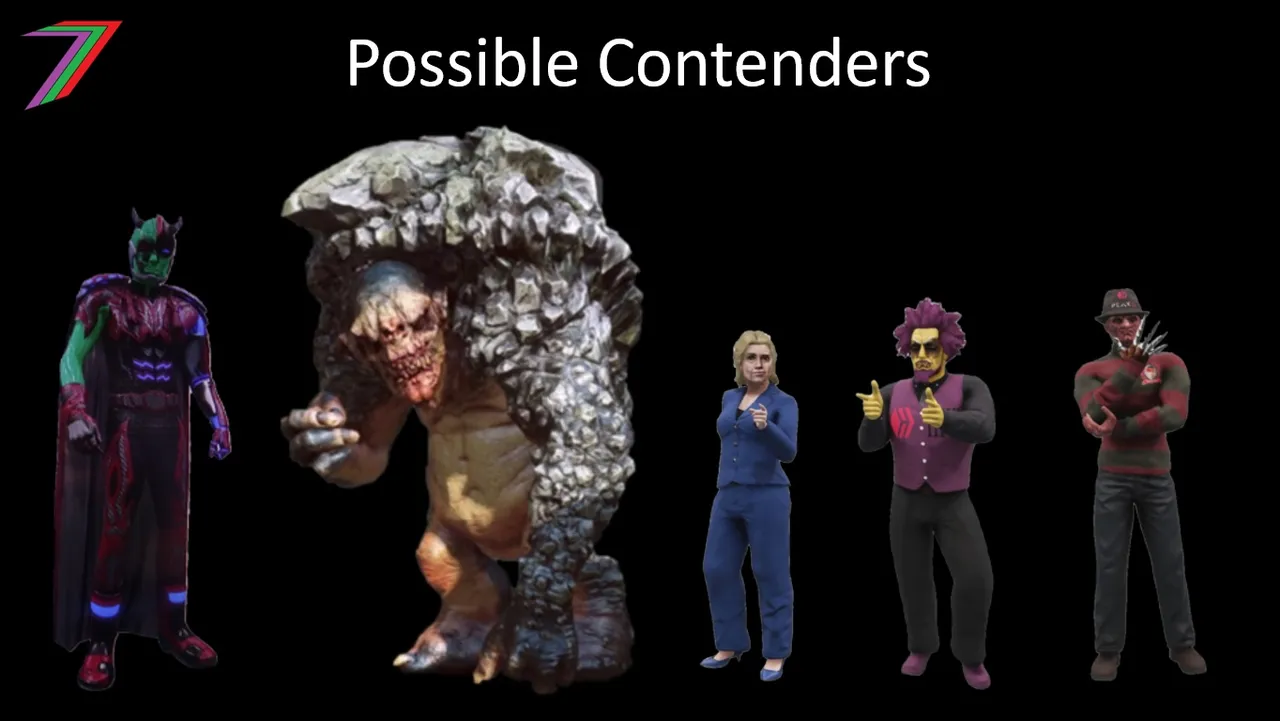
I do not know if there is a pointed top to the global hierarchical structure. The top could be the Establishment leaders. I doubt that to be the case. The Establishment are obsessed with hierarchy and structure; that is why it is everywhere. If there is another level to this structure, who would be in it? Maybe, there is a very small group of Establishment leaders who have managed to rise above the rest. Maybe, there is another group of people who have managed to keep completely out of the limelight.
In my post, God, Gods, Aliens, and Trolls, I speculated about the existence of aliens and other intelligent life forms on this planet. They could form the top of the pyramid. I doubt the top is aliens. They would have superior technology to us and could have controlled us much easier a long time ago. Those at the top appear constrained to using contemporary technology. An alternative terrestrial intelligent life form would seem more likely to be at top of the pyramid. Aliens might have chosen to be observers rather than active participants in their global experiment. There are many authors with many theories regarding who rules the world. The only thing we know is that the world is being controlled by the few. The few could be a thousand people (i.e. the Establishment leaders) or it could be far fewer.
More posts

If you want to read any of my other posts, you can click on the links below. These links will lead you to posts containing my collection of works. These 'Collection of Works' posts have been updated to contain links to the Hive versions of my posts.
Hive: Future of Social Media

Spectrumecons on the Hive blockchain
